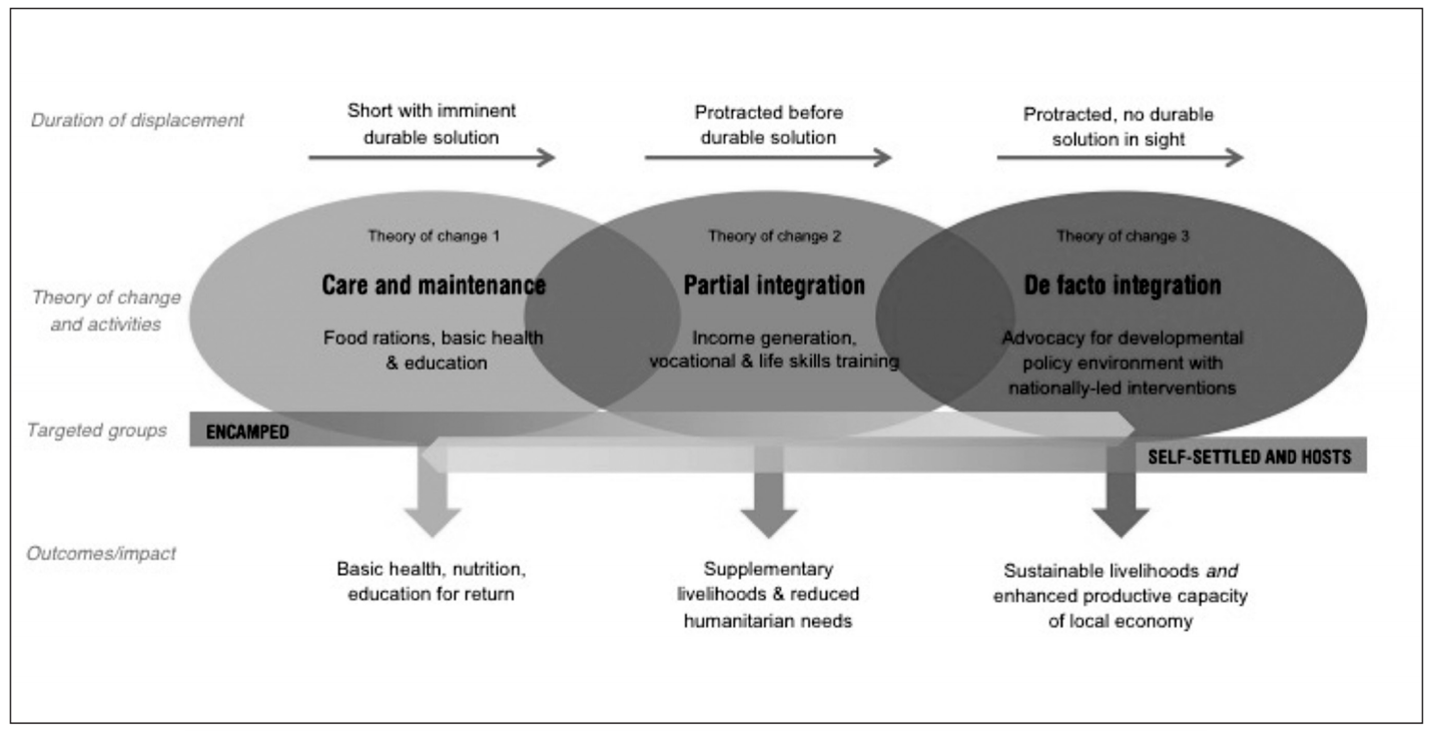The Process of Integration

Karen Jacobsen, PhD and Charles M. Simpson, with Marina Lazetić, Jessica Sadye Wolff, Madison Chapman, and Anna Cumming
Dr. Karen Jacobsen is the Henry J. Leir Professor of Global Migration and Principal Investigator of the Refugees in Towns Project.
Charles M. Simpson is a former Visiting Fellow at the Feinstein International Center, Friedman School of Nutrition Science and Policy at Tufts University.
The Process of Integration
Discourse on refugee urban integration includes both the noun form “integration”—i.e. a condition or goal to be achieved—and the verb “integrating”—i.e. an active process by which individuals, groups, or networks connect over time. The integration process occurs at the individual and the collective levels, psychologically, socially, and in physical space.[1]
Whether the integration process is one-way, two-way, or multidirectional is contended. Among most academic writers and Western institutions, the integration process is understood as “dynamic and two-way: it places demands on both receiving societies and the individuals and/or the communities concerned. From a refugee perspective, integration requires a preparedness to adapt to the lifestyle of the host society without having to lose one's own cultural identity.”[2] The UNHCR, for example, describes the integration process as a multidirectional process.[3] The Canadian government also explicitly describes integration as a two-way process.[4] At the municipal level too, integration is typically conceptualized as a multidirectional process.[5] Academic research also tends to perceive integration as a two-way,[6] three-way (i.e. adding countries of emigration as stakeholders),[7] or multidirectional process in which a mixture of host and new arrival populations all adapt to each other while maintaining elements of the old.[8]
Other actors do not share this viewpoint. The United States, including work by the National Academy of Sciences (2015), tends to implicitly define the integration as a one directional process more akin to assimilation during which “immigrants becoming more like the native-born with more time in the country.” Measures and indicators like income and educational attainment used in the U.S. tend to evaluate how refugees perform compared to the host population and describe a one directional process of refugees catching up to U.S. citizens. Rightest nationalist political groups, particularly in Europe,[9] but also in the U.S.[10] describe integration more in one-directional terms better defined as “assimilation,”[11] than “integration,” in which migrants fully adopt the systems of the host country without any changes from the host population.
The debate about whether the integration process is a one, two, three, or multidirectional process has implications beyond academic theory. Whether policy achieves true two-directional integration rather than simply one-directional assimilation has consequences for psychological and educational wellbeing among migrants with better indicators in cases of integration than cases of assimilation. [12]
The process of integration is multidirectional, and also consists of multiple stages. In the short term, integration requires adaptations in terms of infrastructures, services, and language, while in the long term, integration includes psychological and sociocultural changes, pathways toward citizenship, economic adaptation, and participation in educational systems.[13] This multi-stage process can be depicted visually[14]:

Jacobsen, Karen and Charles M. Simpson. Leir Briefing Room: The Process of Integration. Medford: Leir Institute for Migration and Human Security, 2023. https://leir-briefing-room.ghost.io/process-of-integration/
Footnotes
- Pennebaker et al. 1997: 17; UNHCR and European Commission 2013; Watzlawik and Bresco de Luna 2017
- Schibel et al. 2002
- Bürkin and Chindea 2012, UNHCR 2013
- Hyndman 2011: 6
- See for example models by Juzwiak, McGregor and Siegel 2014; Stanley 2003
- Ager and Strang 2008: 174-175, Caselli 2012
- Di Bartolomeo, Kalantaryan and Bonfanti 2015
- Mestheneos and Ioannidi 2002: 306, Schibel et al. 2002, Phillimore and Goodson 2008, Yoon et al. 2017
- Givens and Maxwell 2012: 87, Ireland 2004: 3
- Cole 2009
- David 2013: 124-125
- David 2013; Schotte, Stanat and Edele 2017
- Schibel et al. 2002
- Crawford, Cosgrave, Haysom and Walicki, 2015: 19
